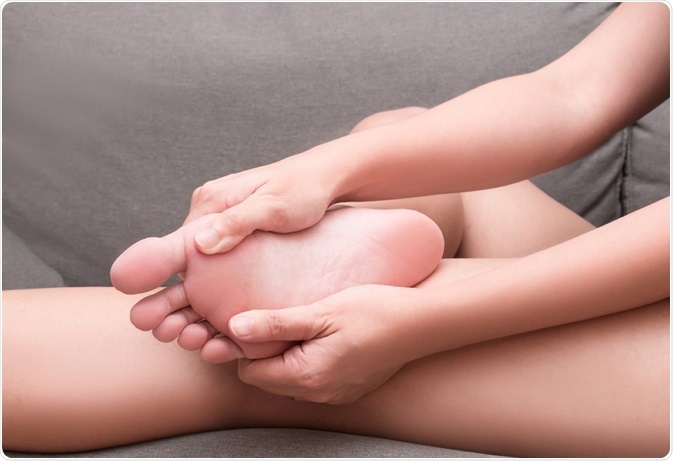What is Sesamoiditis?

Sesamoiditis is a health condition that involves inflammation in the feet' sesamoid bones, which is most common in young people who take part in physical activities such as dancing or football.

Sesamoid Structure and Function
Most people have two sesamoid bones on each foot, located behind the big toe at the bottom of the feet. However, some people have bipartite sesamoids, resulting in four pieces of bone in each foot.
The sesamoid bones' primary role is to support the flexor tendons in the feet, which are responsible for the downward movement of the big toe.
Sesamoiditis is a condition that involves inflammation and pain of the sesamoids, usually resulting from a particular event that caused the big toe to bend upwards and injuring the bone suddenly.
Causes
Many factors can cause damage to the sesamoids and lead to inflammation in the area.
Individuals who participate in physical activity that places stress on the toe-end of the feet are at an increased risk of sesamoiditis. This may include dancers, soccer players, football players, and catchers or pitchers in baseball.
Inappropriate footwear can also contribute to the cause, such as high heels that redistribute significant weight to the big toe area. In some cases, simply falling over can cause damage and the presentation of symptoms.
In most cases of sesamoiditis, the patient has recently increased the duration or intensity of the physical activity that is likely to have caused the injury.
Symptoms and Diagnosis
Pain and inflammation are the primary symptoms of sesamoiditis. Individuals with the condition often report that the pain worsens during activities that pressure the foot, such as walking.
Distinct from other conditions of the forefoot, sesamoiditis usually has a gradual onset as it results from a series of small injuries to the sesamoids. Over time, this can develop into an intense throbbing in the foot.
There are not usually visual signs of damage in the area, such as redness or bruising, and diagnostic imaging techniques are required to identify the cause of the pain. X-ray imaging can be used but is not sensitive to small bone fractures and, for this reason, a bone scan or magnetic resonance imaging (MRI) is often preferred.
Management
Physical therapy is the first-line approach in the treatment of sesamoiditis. Patients need to allow the area to rest and avoid putting their feet under significant stress.
Strapping the big toe to prevent it from moving can help to accelerate the healing process. Additionally, specialized orthotics can be built to redistribute the pressure away from the sesamoid bone during the healing period.
Non-steroidal anti-inflammatory drugs can help relieve the pain and reduce the inflammation related to the sesamoid injury. A corticosteroid injection administered directly to the affected area can also help for more severe pain.
Depending on the severity of the condition, it can take several weeks or months for the sesamoids to heal. During this period, high-impact physical activity should initially be avoided (alternative low-impact sports such as swimming can be practiced) and gradually reintroduced as the area heals and gains strength. Applying ice to the area after exercise or another aggravating activity can help to reduce the inflammation.
For continued symptoms, wearing a leg fracture brace for up to six weeks may provide support and assist in healing. In severe cases, surgical fixation may be required to rejoin a fractured sesamoid.
References
- http://www.podiatrynetwork.com/r_sesamoditis.cfm
- http://www.foot.com/site/foot-conditions/sesamoiditis
- http://www.aofas.org/footcaremd/conditions/ailments-of-the-big-toe/pages/sesamoiditis.aspx
- http://www.ncbi.nlm.nih.gov/pmc/articles/PMC4017307/
- http://footcarefacts.com/what-is-sesamoiditis/
Further Reading
- All Sesamoiditis Content
Last Updated: Jan 20, 2021

Written by
Dr. Ananya Mandal
Dr. Ananya Mandal is a doctor by profession, lecturer by vocation and a medical writer by passion. She specialized in Clinical Pharmacology after her bachelor's (MBBS). For her, health communication is not just writing complicated reviews for professionals but making medical knowledge understandable and available to the general public as well.
Source: Read Full Article